2018 Hyundai Ioniq Electric Plus PHEV Driver Review
 Tuesday, July 17, 2018 at 3:05PM
Tuesday, July 17, 2018 at 3:05PM 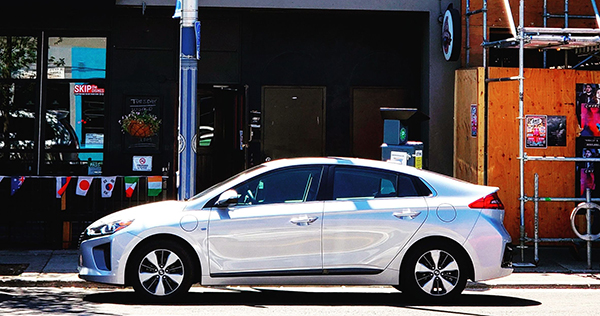
By Gadjo Cardenas Sevilla
At first glance, the Hyundai Ioniq Plug-In Hybrid Electric Vehicle looks like a cohesive and balanced four-door sedan that’s both practical and incredibly roomy.
I’m happy to report that after a week with the Hyundai Ioniq Hybrid as my main ride, I never had to head to a gas station. I did have to charge the car’s EV battery twice in a public charging station, a total of five hours, yet managed to return the car to Hyundai with a full gas tank (or a 850 km range) as well as the battery on reserve. HIt jump to learn more about this innovative hybrid.
If I was driving my 2003 VW Jetta Turbo, I would have had to gas up at least once and could have easily spent $50-55.00 in gas to cover the distance I covered mostly on battery.
There are hints that this is not a regular Hyundai. it is one of three vehicles sharing the Ioniq name, this one can be plugged in to charge its electric motor, but you can also fill it up at your local gas station.
The interior on my fully-decked out model had tasteful leather seats in rather generic light gray colour with blue piping. The dashboard is well appointed and easy to understand.
I like that the infotainment display was sized just right and not too big. Android Auto synched nicely with my Samsung Galaxy S9. This allowed me to use Waze and Google Maps as well as various podcast and music playback services.
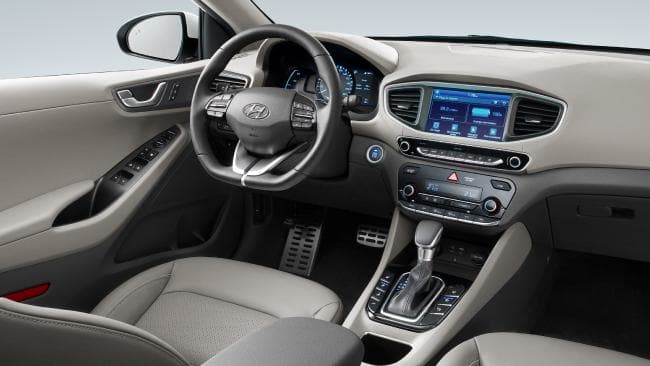
Ride and handling are solid. The steering is a bit too feathery to my taste but nonetheless responsive and very accurate. Visibility in this car is generally good except for the rear-view which has a spoiler covering around 40 per cent of the rear view.
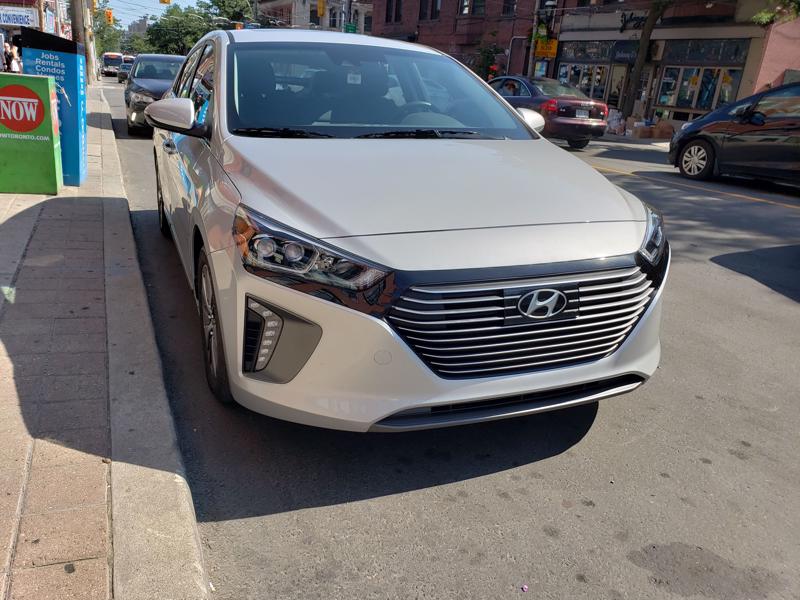
As someone who has driven a stick-shift for most of his driving life and, to a lesser extent, some automatic cars. The idea of visceral and instantaneous sensory feedback and muscle memory is part of how I drive. I can hear and feel the engine, I know when it is time to shift, I can calculate ahead of time.
Driving the Hyundai Ioniq has taught me new things. The LED instrument cluster doesn’t focus on speed or acceleration or RPMs. Instead it focuses on range, as well as on driving economically. Each minute decision, whether its braking, coasting or accelerating, has an overall effect on you power storage and your mileage. This car has taught me to change the way I drive to better extend the battery life.
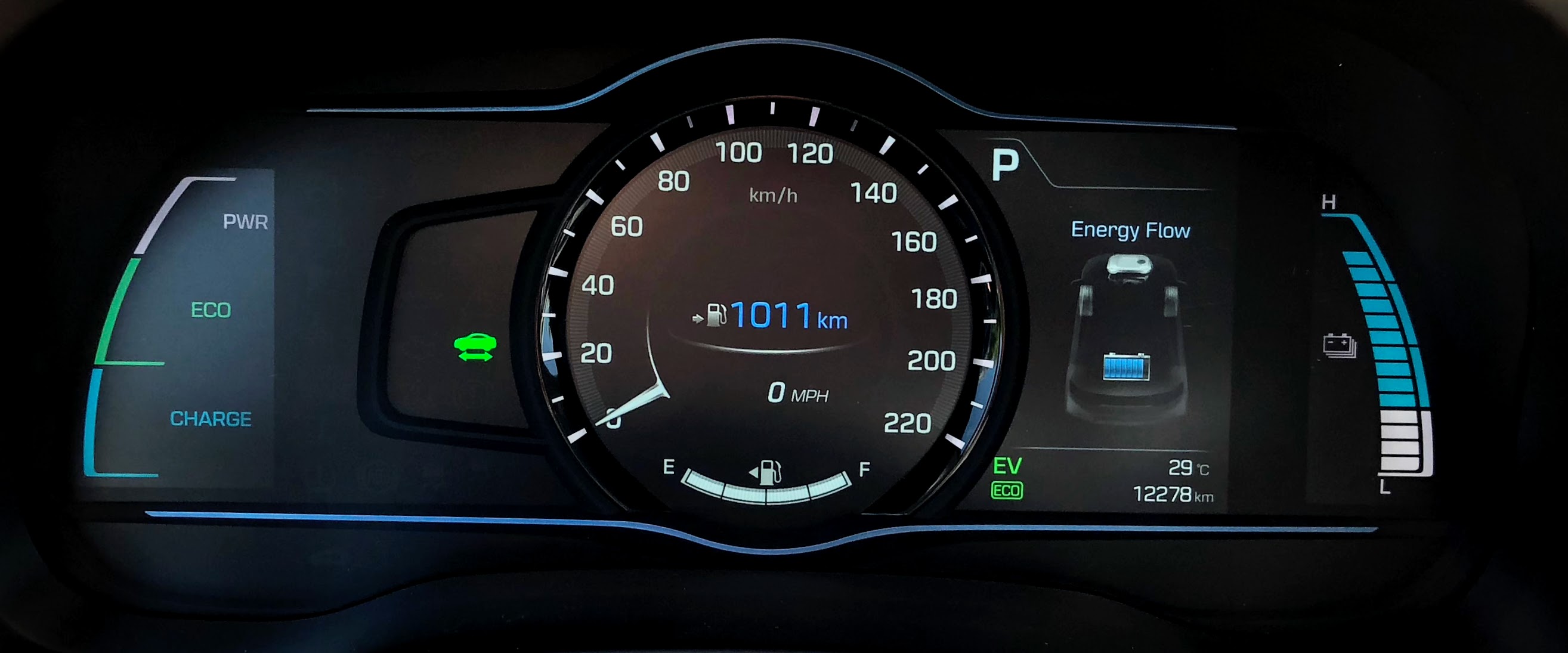
The Hyundai Ionic Electric Plus, which retails for around $32,000 is a more visual experience. You can’t hear the engine until you deplete your battery storage or need to accelerate on the highway. You always know what is going on thanks to the visuals on the cluster. You can tell when you’re using up battery and when you’re regenerating energy. You also see a green ECO logo light up when you’re using the electric motor. This disappears when the gas engine kicks in during more aggressive driving.
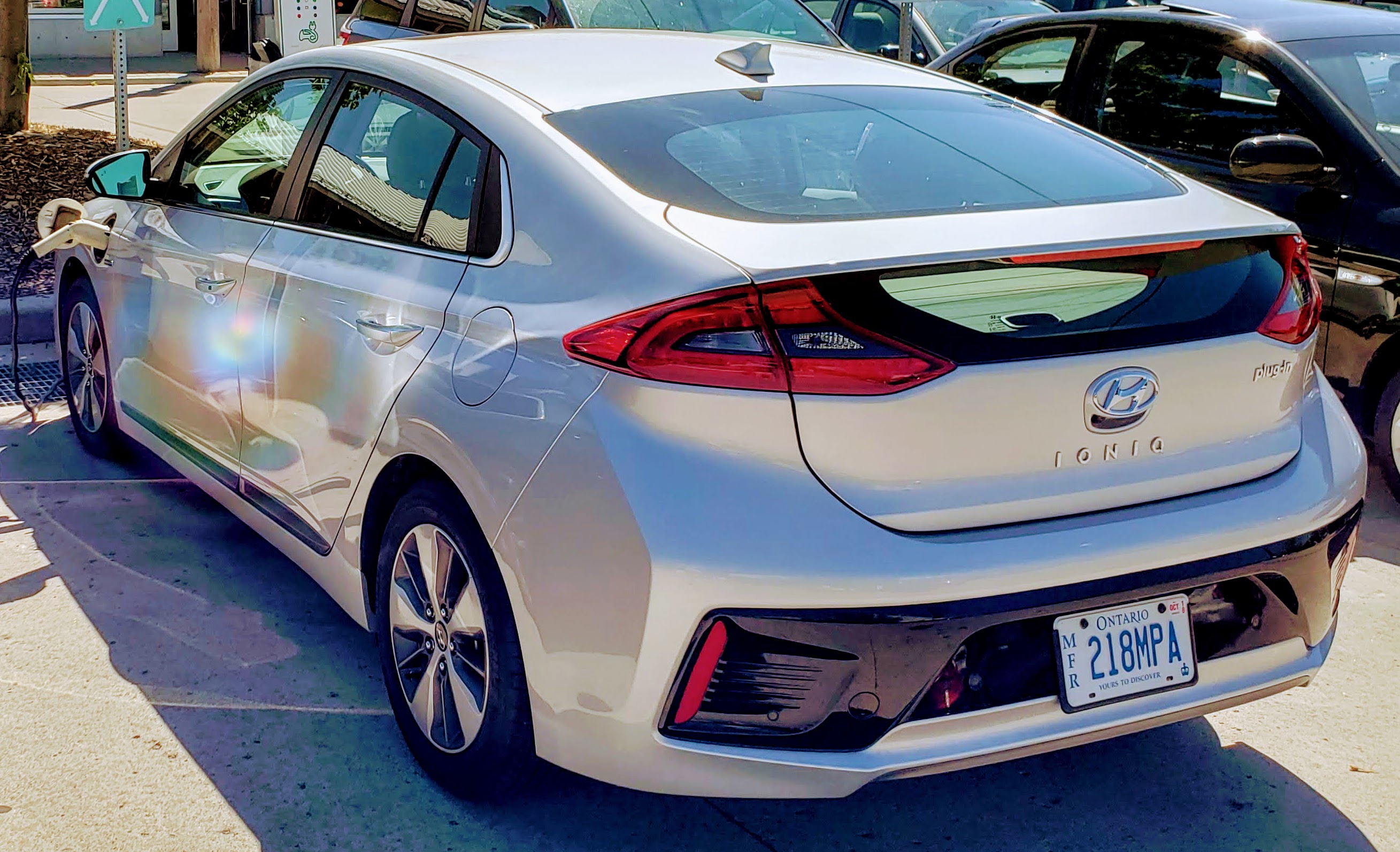
Most of the time, the car is ninja-like silent except for a mild hum that sound more like a Star Wars speeder than a passenger car. Once on Drive, it requires practice to stay within the ECO level of driving, as being more aggressive with the accelerator pushes you to PWR which sees your battery reserves plummet dramatically. Smart coasting, especially downhill, or braking regeneratively, feeds energy back into the battery.
If you, like me, panic when your smartphone’s battery is below half, then driving the Hyundai Ioniq, or any similar PHEV, might be a source of anxiety. It shouldn’t.
You still have around a 700 KM range once the battery peters out. But the idea for me was not to use the gas reserves, so I opted to charge the car as often as possible.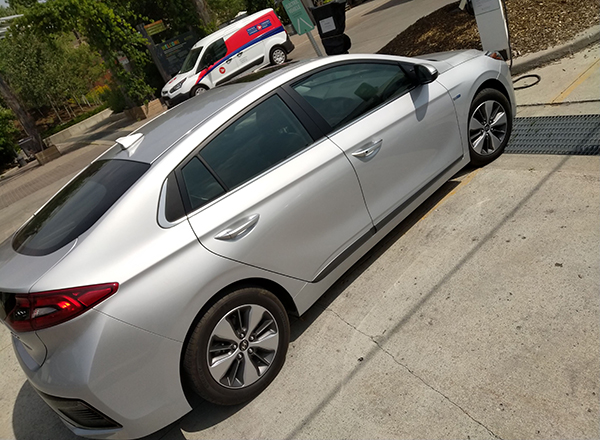
This presented its own set of challenges. I live in an apartment with basement parking, so I don’t have access to a charger or even a plug to top up the EV (if you have either of those, live in a home or charge at the office, you should be fine). In my case, I needed to rely on free charging stations (the charge is free, parking is not) to live the EV life and maintain zero emissions during the duration of my test drive.
I did find a free (meaning open) charging station four kilometers away from home. It had nearby free wi-fi and coffee shop, so I was set for at least a few hours and could get some work done while the Ioniq charged its ions.
The Hyundai Ioniq Electric Plus was a great car around town. I took my son to his summer camp, ran various grocery and LCBO runs, attended press events and even drove to the Danforth when I had a Lamb Gyro craving. T
he Hyundai Ioniq PHEV proved to be one of the most capable and most civilized cars I’ve had the pleasure to drive.
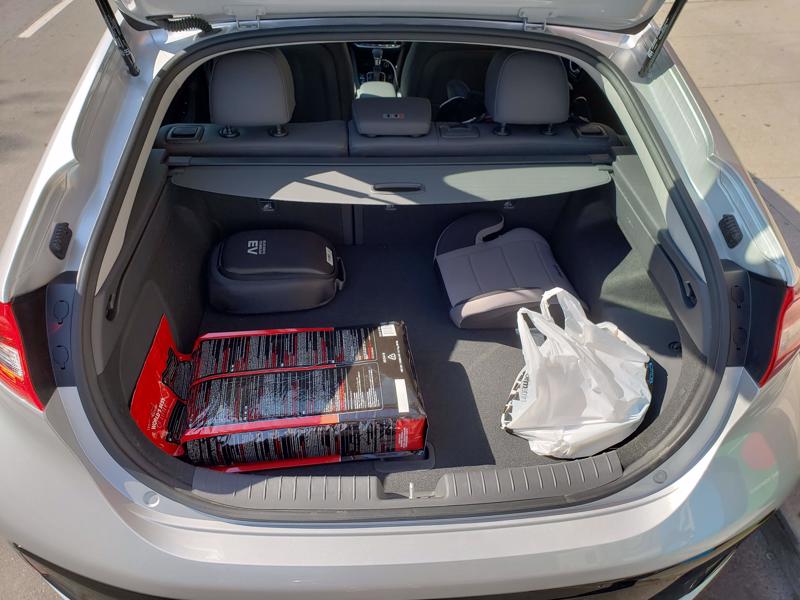
Space is abundant. Specially legroom and headroom for taller folks. The hatch/trunk is also capacious, ideal for hauling a few weeks’ worth of groceries or all your luggage and camping essentials for a weekend trip. This would be a family car I would consider as someone who likes the certainty of a gas engine but feels strongly about the benefits of going green through hybrids and EVs.
Unfortunately, driving the Hyundai Ioniq for a week also exposed the sad state of public EV chargers in Toronto’s downtown core and surrounding areas. This, plus the unfortunate news that the provincial government is ending incentives for EVs and hybrids does a lot to dampen anyone’s desire to consider a hybrid, PHEV or pure EV.
None of this is Hyundai’s fault. The Ioniq Hybrid is a standout hybrid vehicle that exudes quality and thoughtfulness and is easily the most practical PHEV in the market today as well as having the most impressive range/mileage of any full-sized 5-door sedan in recent memory.
Rating: 4.5 out of 5




















Reader Comments